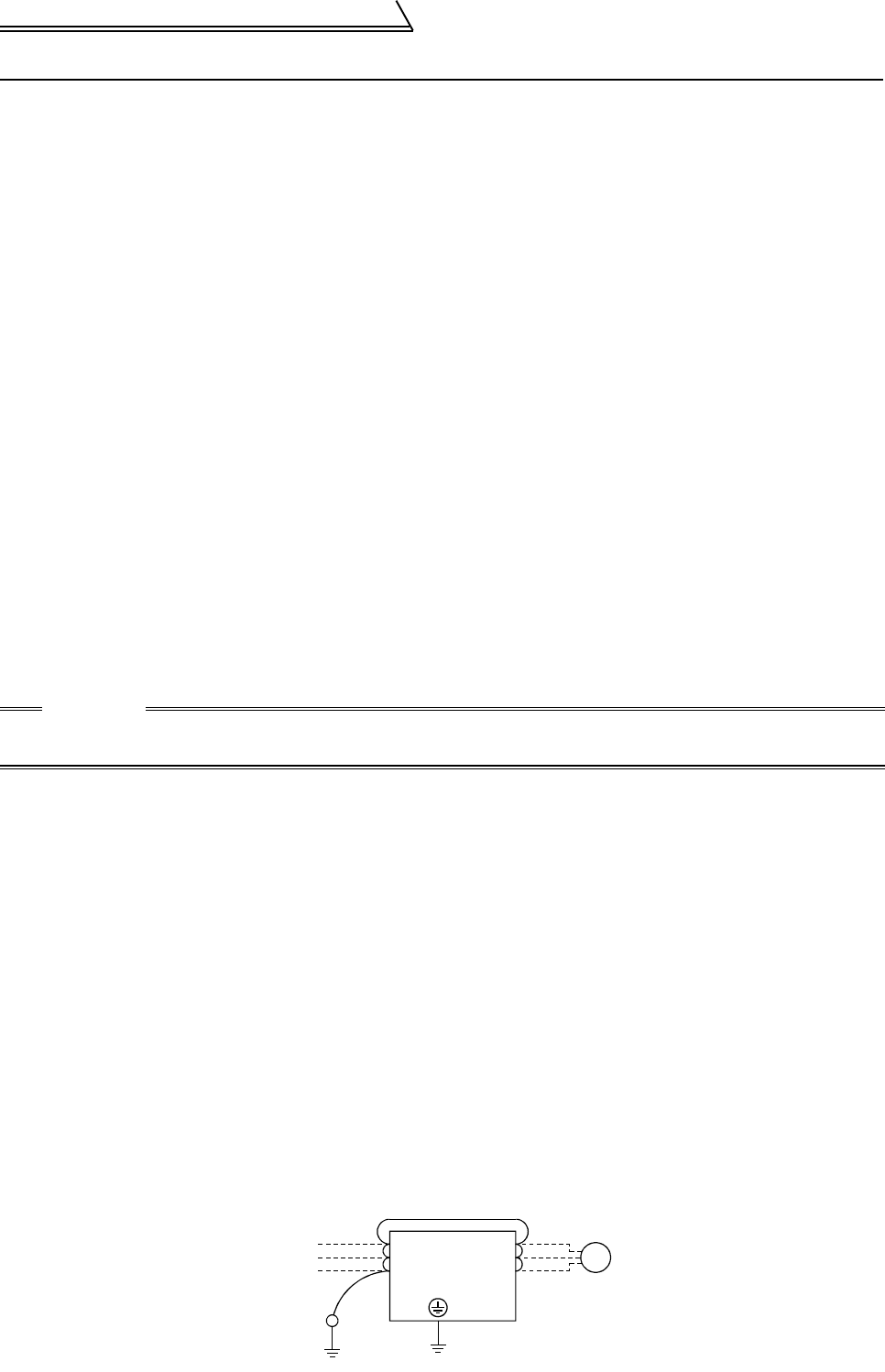
93
Precautions for maintenance and
inspection
6.5 Precautions for maintenance and inspection
6.5.1 Precautions for maintenance and inspection
The inverter is a static unit mainly consisting of semiconductor devices. Daily inspection must be performed to
prevent any fault from occurring due to the adverse effects of the operating environment, such as temperature,
humidity, dust, dirt and vibration, changes in the parts with time, service life, and other factors.
!
Precautions for maintenance and inspection
For some short time after the power is switched off, a high voltage remains in the smoothing capacitor. When
accessing the inverter for inspection, switch power off, wait for more than 10 minutes, and then make sure that the
voltage across the main circuit terminals P-N of the inverter is not more than 30VDC using a tester, etc.
6.5.2 Check items
(1) Daily inspection
Basically, check for the following faults during operation.
1) Motor operation fault
2) Improper installation environment
3) Cooling system fault
4) Unusual vibration and noise
5) Unusual overheat and discoloration
During operation, check the inverter input voltages using a tester.
(2) Cleaning
Always run the inverter in a clean status.
When cleaning the inverter, gently wipe dirty areas with a soft cloth immersed in neutral detergent or ethanol.
6.5.3 Periodic inspection
Check the areas inaccessible during operation and requiring periodic inspection. For periodic inspection, consult us.
1) Cooling system fault : Clean the air filter, etc.
2) Tightening check and retightening : The screws and bolts may become loose due to vibration, temperature
changes, etc. Check and tighten them.
Tighten them according to the specified tightening torque. (Refer to
page 11.)
3) Check the conductors and insulating materials for corrosion and damage.
4) Measure insulation resistance.
5) Check and change the cooling fan and relay.
6.5.4 Insulation resistance test using megger
1) Before performing the insulation resistance test on the external circuit, disconnect the cables from all terminals
of the inverter so that the test voltage is not applied to the inverter.
2) For the continuity test of the control circuit, use a tester (high resistance range) and do not use the megger or buzzer.
3) For the inverter, conduct the insulation resistance test on the main circuit only as shown below and do not per-
form the test on the control circuit. (Use a 500VDC megger.)
CAUTION
Do not use solvent, such as acetone, benzene, toluene and alcohol, as they will cause the inverter sur-
face paint to peel off.
R
S
T
U
V
W
IM
Power
supply
500VDC
megger
Inverter
Earth (ground) terminal
Motor


















